On our last full day in Zhongdian, Driver Liu and Huang took us out of town and over winding, mountainous (but beautifully graded) roads to a small village about one hour away. We saw rainbows on the way, and as we rounded the final turn, the village came into view, spectacularly nestled into a tiny valley.

The village is the home of a well-known traditional potter, with whom Huang had arranged for us to spend the whole day to see what life is like for a Tibetan village family.
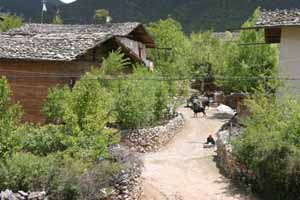 |
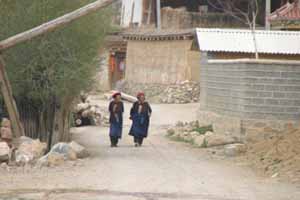 |
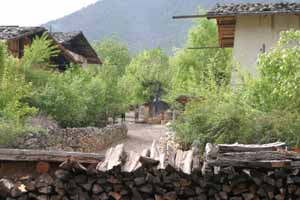 |
The potter's work, based on raditional local patterns used by many producers, is considered much higher in quality and technique than competitors. As a result, many fine hotels and restaurants in the region place large orders with him. He even has quite a following in Tokyo, of all places! But perhaps it's not surprising, as Japanese have a reverence for traditional hand-work of all types.
| We pulled up to the home. All was quiet. A brook ran through the village and we stepped over it to get to the front gate. The home was simple and practical. Animals live in the ground-floor courtyard, with small stalls for protection. The wife, who we didn't get to meet, had already taken the family's sheep and yaks out to the hills for grazing for the day. Two pigs and a couple of puppy dogs stayed behind. | 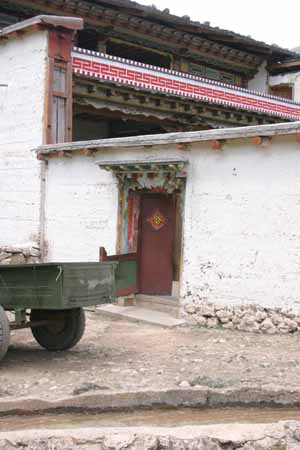 |

The hand-loom on the porch showed that after she brings the animals home, she has yet more tasks ahead.
 |
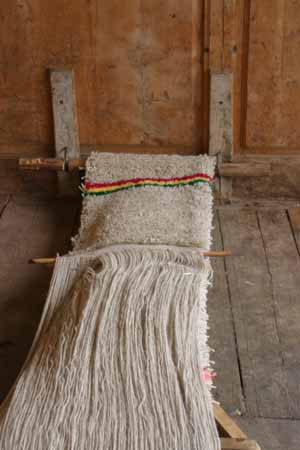 |
| Actually, two master potters live and work in the house: father and son. They were both quiet but welcoming. | 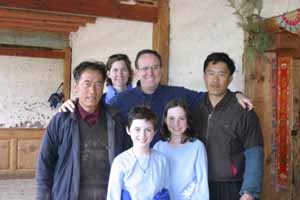 |
| Inside, the house seemed enormous. Huang, who has taken other guests here, showed us around. | 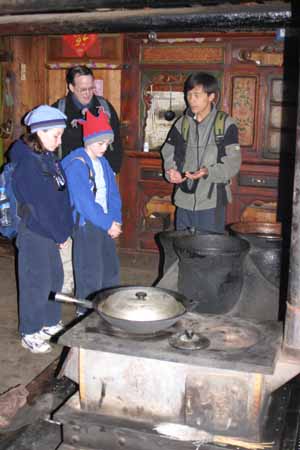 |
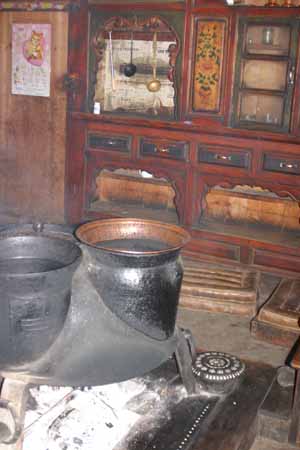 |
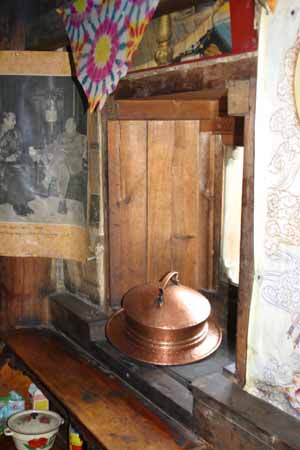 |
The woodstove occupied one corner of the main room, leaving plenty of space for the son to work.

Across the room and through an open door, his father worked in a small room decorated with old posters of Chairman Mao.
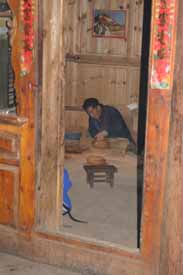 |
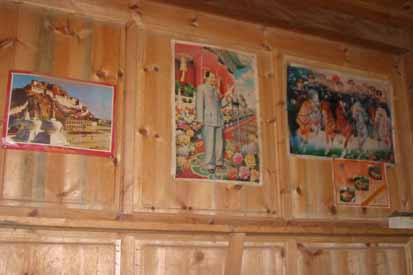 |
In the main room, a huge copper pot held a supply of water drawn from the village well.
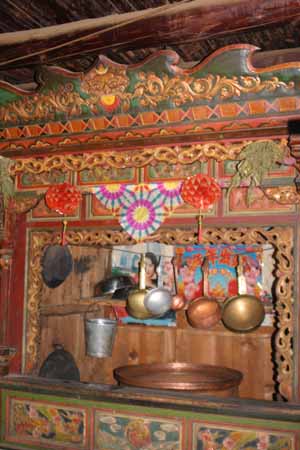 |
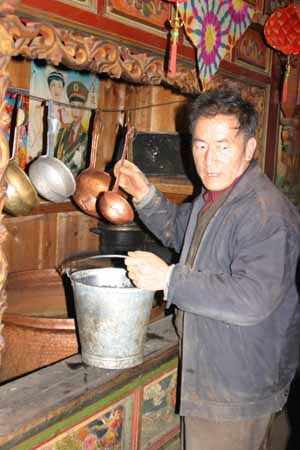 |
Other shrines and mementoes drew our eye, the bright colors contrasting with the dark wood. (My flash illuminates everything too brightly; the atmosphere was actually a little bit smoky and dusty, with soft, natural light. )
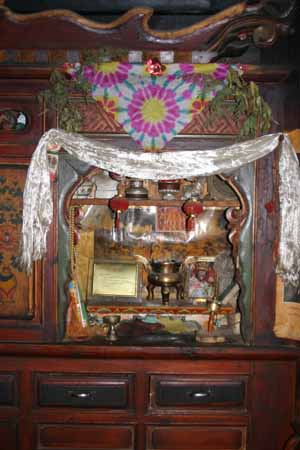 |
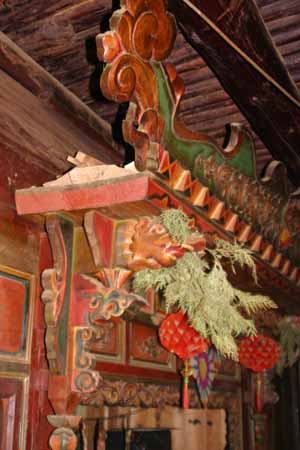 |
| We headed upstairs to keep exploring, passing the pantry on the way. | 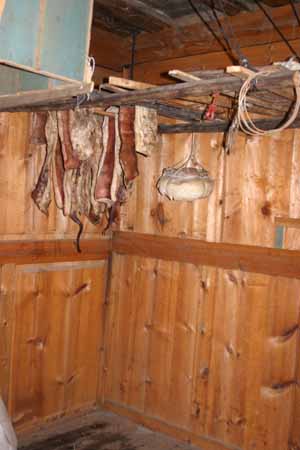 |
| Behind a small wooden door we found the most important room in the house: the family's Buddhist altar, where they gather twice daily to pray and worship. Compared to the austerely functional living spaces, this room obviously contained all of the wealth of the family. | 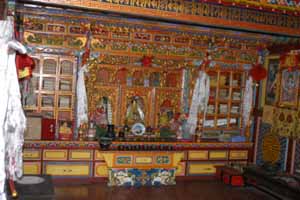 |
It was a shrine not only to Buddha, but to the family's third son, a lama.
|
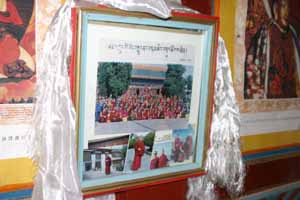 |
His older brother, the master potter, became very animated and talkative (for the only time during our stay) when he told us that his brother was so smart that he could not only read all of the sutras in the family's collection of prayer books, but he had been sent to Lhasa and to Beijing to train as a teacher. The whole family is obviously very proud of him.
Downstairs, the father showed us his craft, starting with making the clay itself. He is successful enough to employ others to do the backbreaking work of going into the mountains to extract the dried clay, lug it back to the village, and sift and prepare it. He showed us how he mixes water with the dried material, kneads it quickly and deftly, then leaves it to cure for a day or so.
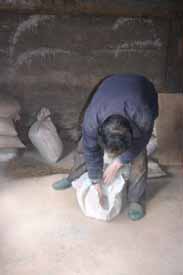 |
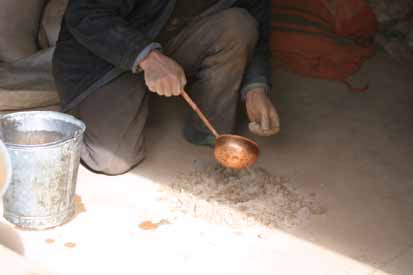 |
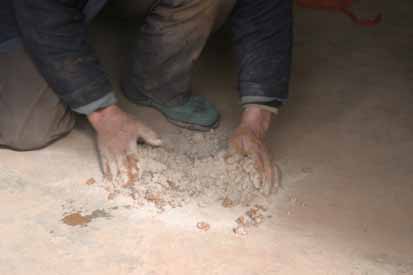 |
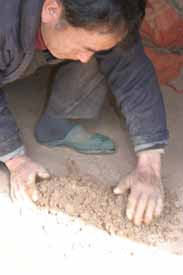 |
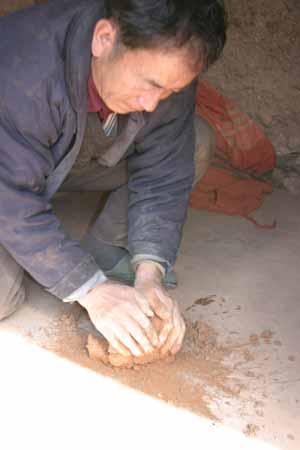 |
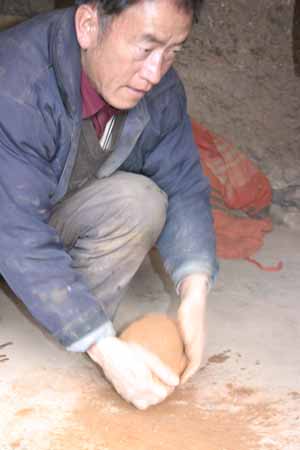 |
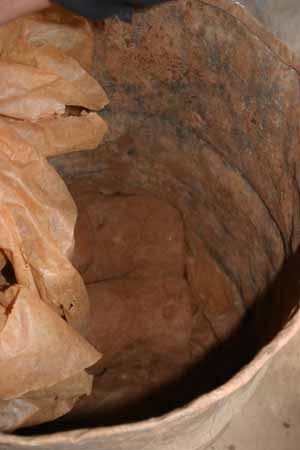 |
The process took just a few minutes, but we could tell that he had brought a lifetime of experience to this simple task. Then, we followed him back inside to see him transform raw clay into intricate vessels. |